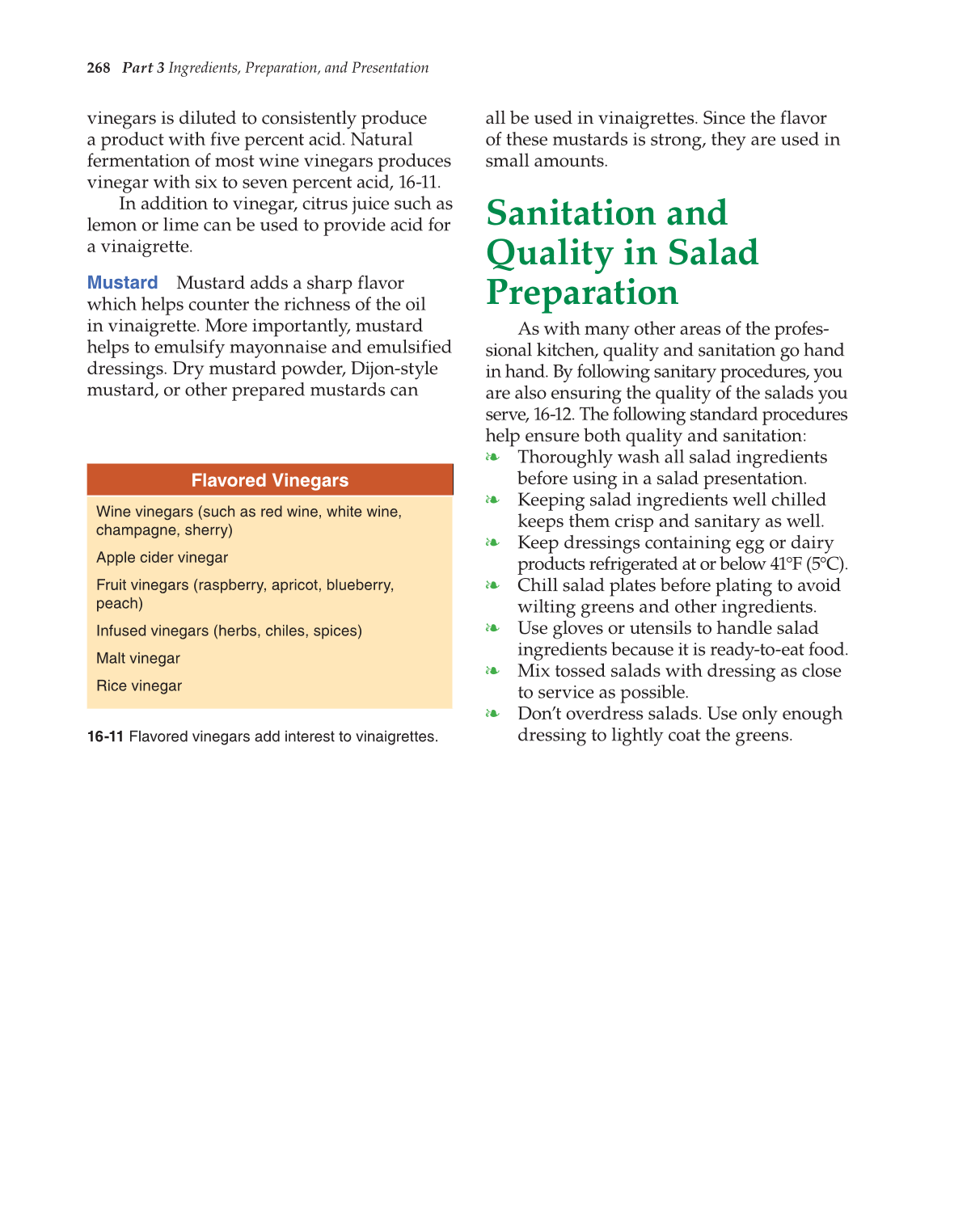268 Part 3 Ingredients, Preparation, and Presentation
vinegars is diluted to consistently produce
a product with five percent acid. Natural
fermentation of most wine vinegars produces
vinegar with six to seven percent acid, 16-11.
In addition to vinegar, citrus juice such as
lemon or lime can be used to provide acid for
a vinaigrette.
Mustard Mustard adds a sharp flavor
which helps counter the richness of the oil
in vinaigrette. More importantly, mustard
helps to emulsify mayonnaise and emulsified
dressings. Dry mustard powder, Dijon-style
mustard, or other prepared mustards can
all be used in vinaigrettes. Since the flavor
of these mustards is strong, they are used in
small amounts.
Sanitation and
Quality in Salad
Preparation
As with many other areas of the profes-
sional kitchen, quality and sanitation go hand
in hand. By following sanitary procedures, you
are also ensuring the quality of the salads you
serve, 16-12. The following standard procedures
help ensure both quality and sanitation:
❧ Thoroughly wash all salad ingredients
before using in a salad presentation.
❧ Keeping salad ingredients well chilled
keeps them crisp and sanitary as well.
❧ Keep dressings containing egg or dairy
products refrigerated at or below 41°F (5°C).
❧ Chill salad plates before plating to avoid
wilting greens and other ingredients.
❧ Use gloves or utensils to handle salad
ingredients because it is ready-to-eat food.
❧ Mix tossed salads with dressing as close
to service as possible.
❧ Don’t overdress salads. Use only enough
dressing to lightly coat the greens.
16-11 Flavored vinegars add interest to vinaigrettes.
Flavored Vinegars
Wine vinegars (such as red wine, white wine,
champagne, sherry)
Apple cider vinegar
Fruit vinegars (raspberry, apricot, blueberry,
peach)
Infused vinegars (herbs, chiles, spices)
Malt vinegar
Rice vinegar
